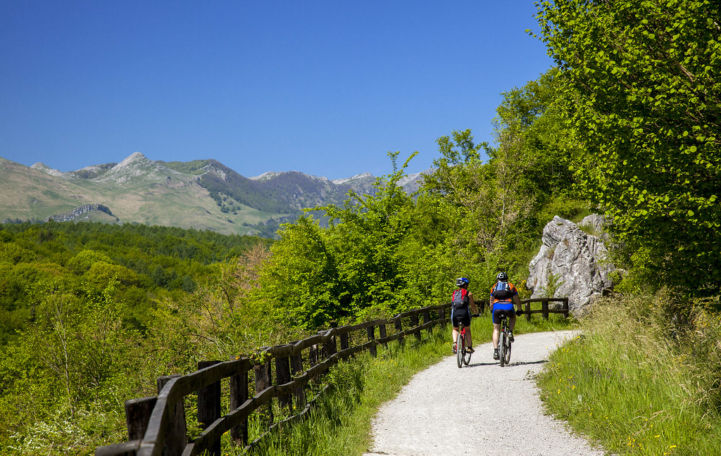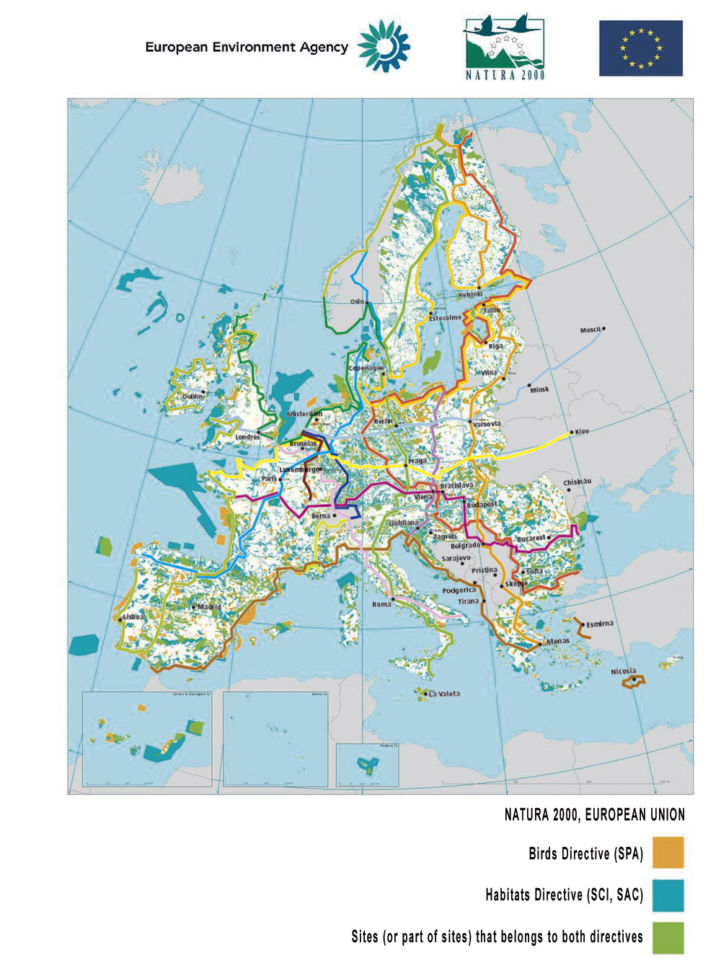Can cycling tourism in natural areas help in biodiversity recovery?
Biodiversity refers to all kinds of life to be found in one area, including the variety of animals, plants, fungi and microorganisms that make up the natural world. (1) These living organisms work together in ecosystems, maintaining a fragile balance and supporting life. Biodiversity is essential because ecosystems provide us with the entirety of our food (except for salt and water), 40% of our medicine and numerous materials and services such as purifying the air that we breath. (2) Moreover, biodiversity is closely linked to climate regulation and it is psychologically soothing too: spending time in diverse natural spaces can help preserve our mental balance.
But Europe’s nature and biodiversity is experiencing a serious and continuing decline, according to the European Environment Agency’s April 2021 State of nature report. (3). Assessments have shown that some causes for biodiversity loss are agricultural activities, urbanisation and pollution, and this is a serious threat to the continuity of life and well-being in the years to come.
In order to target the loss of biodiversity and the degradation of ecosystems, the European Union set up the Natura 2000 network of protected areas to ensure the survival of Europe's most valuable species and habitats (4), including over 27,300 individual sites that correspond to 18% of the European land area of the EU Member states. It is included in the Emerald Network, an ecological network made up of Areas of Special Conservation Interest (5) and involving non-EU countries as well, launched by the Council of Europe (6) .

There are many ways in which #MoreCycleTourism can help preserve and protect biodiversity. The development and promotion of cycling tourism, especially in natural areas, should be done with biodiversity in mind – using sustainable materials when building new infrastructure and doing it with the least impact on ecosystems and the routes taken by wildlife in the area, while keeping the most fragile zones under strict protection.
But if done with care, bringing the bike to natural spaces can become an additional argument to protect these areas which then take extra touristic and economic value. Cycle tourism contributes an 44 billion euros to the European economy every year, exceeding that of the cruise industry for example (7). And as cycle tourists get away from traditional mass tourism destinations, these economic benefits can empower rural areas, also constituting an incentive to take care of protected spaces as those are points of interest for many bike travelers and likely to influence their journey of choice.
One main objective of the ongoing Interreg Europe ECO-CICLE project is to make the bicycle the official sustainable transport to access natural heritage and protected areas. Focusing on cycling routes instead of car infrastructure in natural areas would have a great positive impact on biodiversity, since cycling infrastructure needs less space, which means less sealed soils, less soil pollution and less water pollution (8). And contrary to highways intersecting protected sites, cycling infrastructure does not necessarily limit species’ movement and the area’s ecosystem.
Among the measures identified by the European Environment Agency to protect nature and reverse the degradation of ecosystems by 2030 (9) are the establishment of a larger EU-wide network of protected areas on land and at sea and the launch of an EU nature restoration plan, including the restauration of 25,000 km of rivers to a free-flowing state. Additionally, the EU has a plan to connect more Natura 2000 sites using green infrastructure landscape elements for delivering ecosystem services (10).
It makes so much sense to join forces! Including sustainable cycling developments into these restoration plans could then multiply the economic and health benefits of the works in the long-term. As for natural and semi-natural landscape elements serving as connectors of Natura 2000 sites, well greenways can play a role here.

Cycling tourism will help, if done in the right way
Biodiversity is needed for human life and it should be protected and restored where needed, but not only from a strictly biological point of view. #MoreCycleTourism is a way to reconcile us with our awe at discovering the world, while cultivating the strength and freshness to be part of the change!
Choosing the bicycle in place of other modes of transportation for the holidays is a decision that has many positive impacts on nature and biodiversity. But of course, even bicycle travel needs to be done responsibly. First by reaching the bicycle route in sustainable ways, favouring the train over the plane for instance. And especially by being overall respectful of nature and careful to make no damage when cycling through it.
Let us finish by the 7 principles of the “Leave no trace” movement… Those are great points to keep in mind while on cycle holidays, to take good care of our fragile ecosystems!
- Plan ahead and prepare: Adequate trip planning and preparation helps to complete a cycle journey safely and enjoyably, while simultaneously minimizing damage to the land.
- Travel & camp on durable surfaces: For less impact on the land, keep on cycle trails that have been built to concentrate travel. When camping in the wild, choose your campsite carefully, based on the fragility of vegetation and soil, the likelihood of wildlife disturbance, an assessment of previous impacts, and your potential to cause or avoid impact.
- Dispose of waste properly : Always consider the impacts of what you leave behind. It will affect water and wildlife!
- Leave what you find: Leave areas as you found them. Do not dig trenches or damage live trees and plants and avoid removing flowers or rocks, as this will have a significant impact if everybody does the same.
- Minimize campfire impacts: Favour stoves over campfires as these degrade the natural appearance of many areas and demand the availability of firewood.
- Respect wildlife: Learn about wildlife through quiet observation and avoid disturbing animals and plants. Quick movements and loud noises are stressful to animals. Do not pick up or feed wild animals.
- Be considerate of other visitors: Most people travel in natural areas to connect with and listen to nature. Respect this special time that they have carved out for themselves, but do not hesitate to say hi. Cycle journeys are a great way to make encounters along the path!
Author: Florence Grégoire
(3). https://www.eea.europa.eu/themes/biodiversity/state-of-nature-in-the-eu
(4). https://www.eea.europa.eu/data-and-maps/data/natura-11
(5). https://www.coe.int/en/web/bern-convention/emerald-network
(6). https://www.eea.europa.eu/themes/biodiversity/europe-protected-areas
(7). https://ecf.com/resources/cycling-facts-and-figures